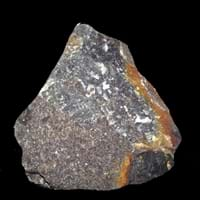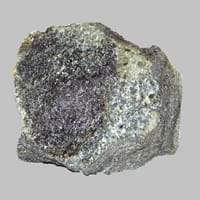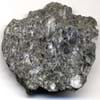Definition
Dolomite is a sedimentary rock containing more than 50 percent of the mineral dolomite by weight
Amphibolite can be defined as a granular metamorphic rock which mainly consist of hornblende and plagioclase
Origin
Southern Alps, France
Unknown
Discoverer
Dolomieu
Alexandre Brongniart
Etymology
From French, from the name of Dolomieu (1750–1801), the French geologist who discovered the rock
From Amphibole + -ite
Class
Sedimentary Rocks
Metamorphic Rocks
Sub-Class
Durable Rock, Medium Hardness Rock
Durable Rock, Hard Rock
Group
Not Applicable
Not Applicable
Other Categories
Coarse Grained Rock, Fine Grained Rock, Medium Grained Rock, Opaque Rock
Coarse Grained Rock, Medium Grained Rock, Opaque Rock
Texture
Earthy
Banded, Foliated, Massive
Color
Black, Brown, Colourless, Green, Grey, Pink, White
Black, Brown, Green, Grey
Durability
Durable
Durable
Scratch Resistant
Yes
Yes
Appearance
Glassy or Pearly
Foliated
Interior Uses
Decorative Aggregates, Homes, Interior Decoration
Countertops, Decorative Aggregates, Entryways, Floor Tiles, Flooring, Homes, Hotels, Kitchens
Exterior Uses
Garden Decoration, Office Buildings
As Building Stone, As Facing Stone, Paving Stone, Office Buildings
Other Architectural Uses
Not Yet Used
Curbing
Construction Industry
As a Flux in the Production of Steel and Pig Iron, As a Sintering Agent in Steel Industry to process Iron Ore, As Dimension Stone, Cement Manufacture, for Road Aggregate, Making natural cement, Manufacture of Magnesium and Dolomite Refractories, Production of Glass and Ceramics, Serves as an Oil and Gas Reservoir rock
As Dimension Stone, Building houses or walls, Cobblestones, Construction Aggregate, for Road Aggregate, Landscaping, Production of Glass and Ceramics, Roadstone
Medical Industry
Taken as a Supplement for Calcium or Magnesium
Not Yet Used
Antiquity Uses
Artifacts, Jewellery, Monuments, Sculpture, Small Figurines
Artifacts, Sculpture, Small Figurines
Commercial Uses
An Oil and Gas Reservoir, As a Feed Additive for Livestock, Gemstone, Metallurgical Flux, Production of Lime, Soil Conditioner, Source of Magnesia (MgO)
Cemetery Markers, Commemorative Tablets, Creating Artwork
Types
Boninite and Jasperoid
Hornblendite
Features
Host Rock for Lead, Traps for subsurface fluids like Oil and Natural Gas., Zinc and Copper Deposits
Clasts are smooth to touch, Matrix variable, Surfaces are often shiny
Archaeological Significance
Famous Monuments
Data Not Available
Data Not Available
Famous Sculptures
Data Not Available
Data Not Available
Pictographs
Used
Not Used
Petroglyphs
Used
Not Used
Formation
Dolomite rocks are originally deposited as calcite or aragonite rich limestone, but during diagenesis process, the calcite or aragonite is transformed into dolomite.
Amphibolite is a coarse-grained metamorphic rock which forms by metamorphism of mafic igneous rocks like basalt and gabbro or from the metamorphism of clay-rich sedimentary rocks like marl or graywacke.
Mineral Content
Clay Minerals, Pyrite, Quartz, Sulfides
Amphibole, Andalusite, Biotite, Calcite, Epidote, Garnet, Hornblade, Kyanite, Magnetite, Olivine, Plagioclase, Pyroxene, Staurolite, Wollastonite
Compound Content
NaCl, CaO, Carbon Dioxide, Magnesium Carbonate, MgO
Aluminium Oxide, CaO, Iron(III) Oxide, FeO, Potassium Oxide, MgO, MnO, Sodium Oxide, Phosphorus Pentoxide, Silicon Dioxide, Titanium Dioxide
Types of Metamorphism
Burial Metamorphism, Cataclastic Metamorphism, Contact Metamorphism
Not Applicable
Types of Weathering
Not Applicable
Chemical Weathering, Mechanical Weathering
Types of Erosion
Not Applicable
Chemical Erosion, Glacier Erosion, Sea Erosion, Wind Erosion
Grain Size
Medium to Fine Coarse Grained
Medium to Coarse Grained
Fracture
Conchoidal
Irregular to Conchoidal
Streak
White
White to Grey
Porosity
Less Porous
Less Porous
Luster
Vitreous and Pearly
Vitreous to Dull
Compressive Strength
Not Available
Cleavage
Perfect
Irregular
Specific Gravity
2.8-3
2.5
Transparency
Transparent to Translucent
Opaque
Density
2.8-2.9 g/cm3
2.85-3.07 g/cm3
Specific Heat Capacity
Not Available
Resistance
Heat Resistant, Pressure Resistant, Wear Resistant
Heat Resistant, Pressure Resistant, Wear Resistant
Deposits in Eastern Continents
Asia
China, India
Russia, Turkey
Africa
Morocco, Namibia
Burundi, Djibouti, Eritrea, Ethiopia, Kenya, Madagascar, Rwanda, Somalia, South Africa, Sudan, Tanzania, Uganda
Europe
Austria, Italy, Romania, Spain, Switzerland
Germany, Greece, Iceland, Norway, Poland
Others
Not Yet Found
Not Yet Found
Deposits in Western Continents
North America
Mexico, USA
Canada, USA
South America
Brazil, Colombia
Brazil
Deposits in Oceania Continent
Australia
New South Wales, Queensland, Yorke Peninsula
South Australia, Western Australia










